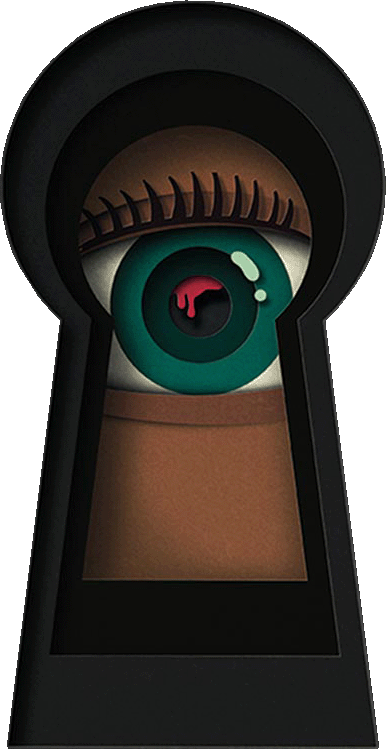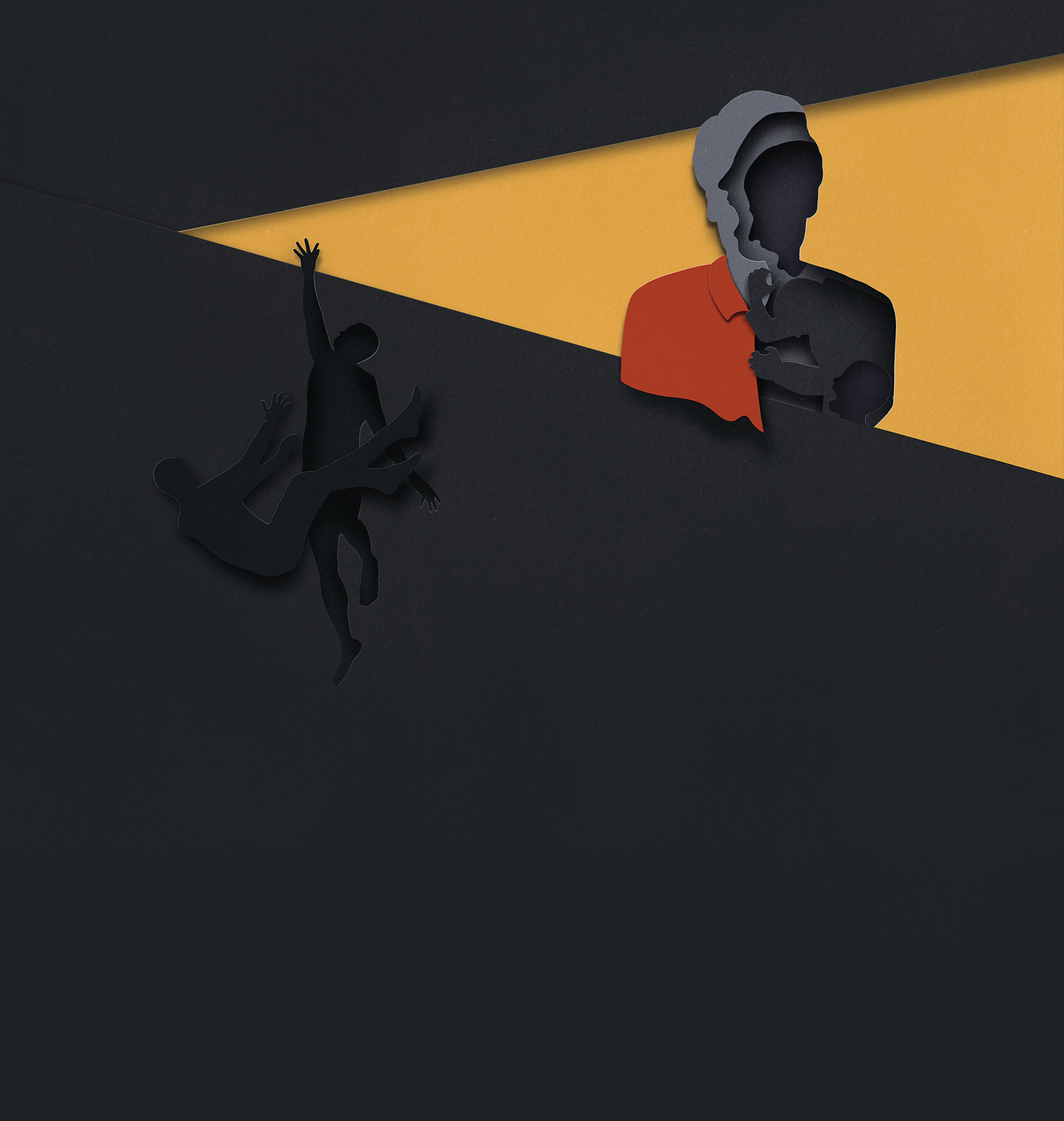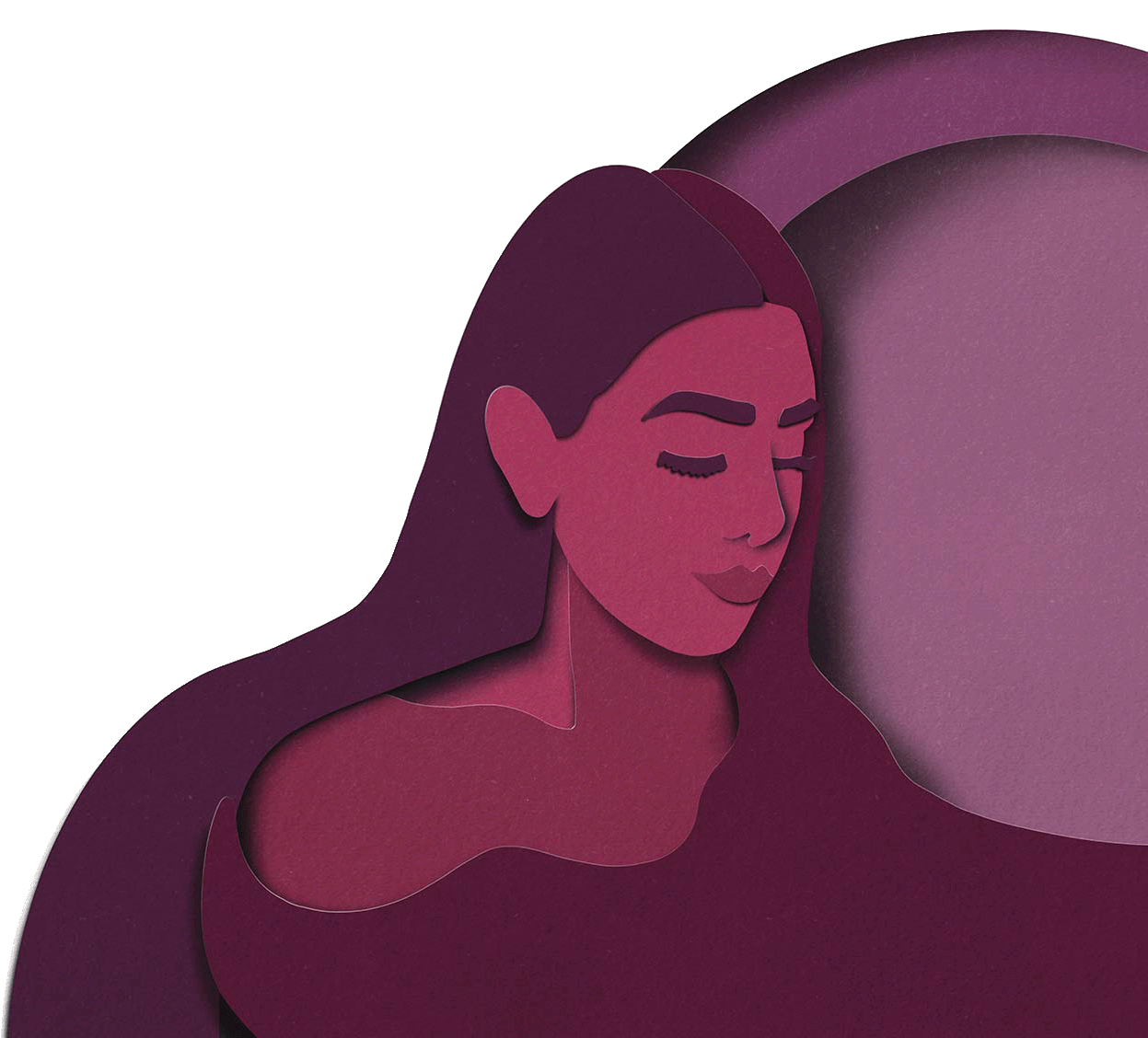
Society has a strange attraction to murder. Yes, the act of taking the life of another person in most places and situations is wrong both legally and morally, but the narratives around these events often make for great conversation fodder. In fact, for many people, a love of true-crime binge-watching, -listening or -reading has become a personality trait. It’s something they brag about, proudly stating that they fall asleep or do chores while listening to podcasts like My Favorite Murderer. Sure, it’s a quirky and seemingly harmless habit, but the disconnect between consumers and the violence at the source of the content is often overlooked. It’s not taken into account that the events behind it had devastating impacts on very real people.
True crime can easily cross the line from educational to exploitative. Ethical considerations must be taken into account when not only consuming, but producing this type of content.
Death is popular
The numbers don’t lie, painting a vivid picture of just how widespread true-crime obsession is. Podcasting has become a popular medium over the last 10 years, with the boom occurring in the mid-2010s largely attributed to NPR’s podcast Serial, released in 2014. Producer Sarah Koenig documented a 1999 American murder case casting doubt on the killer’s conviction, which became the fastest podcast (at the time) to reach five million downloads. It averaged 1.2 million downloads per episode and amassed more than 300 million downloads overall.
In late-2022, years after the podcast’s production, Adnan Syed, the convicted killer who was the subject of Koenig’s documentary, was released from jail and charges were dropped. In another twist, the charges have since been reinstated by Maryland’s appellate court due to the violation of the victim’s brother’s right to attend a key hearing. A new hearing has been ordered.
Since Serial, the appetite for true-crime podcasts has grown massively. On any given day, Apple TV+’s top-10 most popular podcasts in Canada include at least five or six true-crime stories. Dateline is consistently among the top three, while various other Canadian and American productions swap spots, depending on the week.
Details around how much money the creators of some of these productions earn are often fuzzy. Crime Junkie is a popular podcast available in Canada and more than 170 other countries. According to Forbes, it is the number-one true-crime podcast in the world, with more than one-billion downloads in its five-year history. That kind of listenership comes with some serious revenue, with various sources reporting a few hundred thousand to a few million dollars annually.
It’s not just podcasts. Netflix’s 2022 series Dahmer — Monster: The Jeffrey Dahmer Story, garnered international attention when released. It was the number-one series for several weeks and became the third Netflix series to reach one billion hours streamed within 60 days. Actor Evan Peters of American Horror Story fame was awarded a Golden Globe for his portrayal of the serial killer, which was quickly renewed for another season. However, for as much buzz as it garnered, Dahmer simultaneously received heaps of criticism.
Given the real Dahmer’s prominence in pop culture as well as the fact that dozens of books, podcasts, movies and television series have already been produced about his grisly narrative, viewers and victims’ advocates asked what the point of the series was considering it offered no new information about Dahmer’s life or crimes and didn’t contain testimony from survivors or police who worked on the case.
Arguably, there is some historical value in learning about one of the most prominent criminals of recent memory, but when survivors and victims’ families are not consulted about the production it brings into question its true motivation.

A morbid curiosity
Individual reasons for consuming true-crime content vary, but generally, according to experts, there are a couple of commonalities why the genre is so popular. The main answer is simple: curiosity. Usually there is a conscious, or at times subconscious, need to know why the crime happened and why it happened in the way that it did, especially if it occurred nearby. Assistant Professor Dan Devoe, PhD, of MRU’s psychology department, says crime as the subject of entertainment is very attractive.
“It is typically gory or so extreme it catches our attention. That makes it different from all of the other stories that are out there, because it is so unfathomable that somebody would actually do that,” Devoe says.
He suggests that true crime impacts our schema, which is essentially our cognitive framework: how thoughts are organized in the brain and the associations we make.
“When something breaks our schema we really tend to pay attention to it. All of a sudden it is very salient to us.”
That is something Devoe says may also be related to survival value and anxiety. In short, people want to know all about these horrific events to avoid those sorts of situations themselves.
Scott McLean, PhD, is a forensic social worker who spent years working with first responders and family members of homicide victims through the Calgary Homicide Support Group in addition to teaching criminal-justice students at Mount Royal. He says there is an element of “good versus bad” linked to interest in true crime, because often the actions are so incomprehensible that details are needed in order to distinguish ourselves from “those” kinds of people. Essentially, the idea is that the more is known about someone like Jeffrey Dahmer, the more confidence viewers can have that he was bad and they are good.

Do not cross
Police tape around a crime scene is a fluorescent-yellow indicator of clear lines that are not to be crossed by the public. Ethical lines, on the other hand, are not as clearly marked, or even defined at all, leaving it up to consumers and producers to decide for themselves. That ambiguity is where many of the problems with the genre arise.
One of the main critiques around true crime is the lack of consideration for the victim and victim’s family. It’s an unimaginable situation to deal with the unexpected and violent murder of a loved one, and many times grieving families are put on the spot by the media — not just in the immediate aftermath, but in the years to come, as these cases can take many months to get through the court system. It is one thing to have the story shared locally by news media, but there’s now the possibility that it will get picked up by a podcast production team or someone on social media who runs a true-crime page, and shared on their channels.
“Social media complicates the grief for crime victims,” McLean stresses. “Information may get leaked or become incredibly widespread. On top of that, people have many opinions that they might share in comment sections, and there might be victim blaming.”
It can be especially distressing when families are not contacted about their loved one’s story being shared. In many cases, producers get their facts from news sites and court documents. Much of the criticism leveled at Dahmer was from family members of victims who say not only were they not contacted about the series in the first place, but the depiction of their loved ones was not accurate.
“Our family spent more time trying to correct the facts in the media than we did grieving”
— Marilynne Hamilton
A 2016 Calgary double-murder case is a prime example of just how easily misinformation is spread. In the days following the murders of Sara Baillie and her five-year-old daughter Taliyah Marsman, speculation started that Baillie was working as an escort, and police even confirmed the rumour. That narrative was amplified by news outlets, even national media, leading to many stories about Baillie and her purported lifestyle. However, police later clarified that there had been no evidence she ever engaged in sex work. It eventually came out in trial that Baillie was killed for trying to get her friend out of the industry.
“Our family spent more time trying to correct the facts in the media than we did grieving,” says Baillie’s aunt Marilynne Hamilton, pointing out that there are still archived news articles that have not been corrected and contain outdated information. So, imagine if a true-crime podcast chose to do an episode on this story and used incorrect information that appeared to be credible because it came from an established media outlet.
Not having control or say in what is being published about a murdered loved one creates anxiety and panic, according to McLean, and those feelings can be amplified when advocates for the victim(s) are now forced to set the record straight. Additionally, more harm comes in the re-hashing of old news articles and clips from when the crime and court case occurred.
“From a mental-health and wellness perspective, it re-triggers the trauma and then it re-triggers the loss and the grief. So it just complicates their process and reactions,” McLean says.
Many shows claim to want to shine a light on the victim’s life and argue they are helping share their story, but in their execution they end up focusing on the killer and the details around the murder — how gory and deranged they are.
“Even when the victim and victim’s family are included, they’ll be maybe less than five per cent of the whole show, so the focus is really not on those who have been victimized.”
It’s not just ethics around ensuring the victim’s voice is represented and shared accurately. There are also many concerns about plagiarism. Sherri Zickefoose is an MRU journalism alumna who co-authored (with fellow journalist Robert Remington) the national best-selling true-crime book Runaway Devil: How Forbidden Love Drove a 12-Year-Old Girl to Murder Her Family. She knows all too well about just how often true-crime content is ripped off.
“All the time,” is how she responds when asked if she has seen details from her book elsewhere, either in TV shows or podcasts. Many of the exclusive details in her book have been shared on Wikipedia and other popular sites, she says, so it’s become a bit of a free-for-all. “In our book we had to use pseudonyms for many of the people due to a publication ban, so when I see or hear people using those exact same pseudonyms it’s very clear they’ve just ripped right from the book.”
Though when proper credit is given, it is not always easily accessible. It is quite common for podcasts specifically to point to their website or show notes for a list of sources, something the average listener doesn’t do either out of apathy or in part because they just blindly trust that said production has done the proper research.

Empowering families
Much of the content available now rides a fine line between being purely for entertainment and having educational value, according to MRU alumna Racha El-Dib ( Bachelor of Arts — Sociology).
Her opinions come from lived experience, as her sister Nadia was violently murdered in 2018 by an ex-boyfriend. El-Dib had to navigate her grief all while reporters and producers clamoured for interviews. She explains that her family felt pressured to speak out in the immediate aftermath of her sister’s murder so that they could control the narrative.
“Even before people found out it was Nadia and what happened there were already so many rumours out there that were misinformation, and we wanted to make sure that the right information was put out there. We also didn’t want the focus to be on the perpetrator.”
El-Dib recalls that in the days following the murder, an article came out without the family’s consent identifying her sister as the victim. It popped up on her phone within minutes of her family leaving the medical examiner’s office after formally identifying the body.
They decided that from then on they would work with the media when and where they could to ensure that anything published was done with their consent.
El-Dib notes that as painful as it was to be in front of cameras in the days following her sister’s tragic murder, there was a bit of a cathartic element. To have Nadia’s story out there, and to tell it how she wanted to, helped with El-Dib’s grief.
Because of the nature of the crime and the fact that the case never went to trial (the perpetrator would die in a police shootout west of Edmonton four days after the murder), the El-Dib family actually requested that police release the graphic details of what happened, in part so there would be no more questions.
“We just wanted people to know how violent the situation was and to put all of the details out there so that people knew how much of a monster he was.”
The other reason they are open to talking is in hopes of preventing someone else from being victimized the same way “because Nadia was just doing something most people would do and trying to get closure with a former partner.”
A family member watching
El-Dib believes true crime is detrimental to not just victims and those immediately impacted by violent crimes, but also to society.
“There’s this narrative that people just listen to it for fun or to fall asleep, and as somebody who has lived through it, it is really disrespectful,” El-Dib explains, noting that often people forget who the victim even was by the time they start the next episode. This is especially true in an age where people binge multiple episodes in a single session.
El-Dib stresses that true-crime consumers need to remember that there are real people involved in these stories. Many podcast descriptions are something along the lines of “exploring the worst of humanity with a little bit of dark humour mixed in.”
But El-Dib wonders where the room is for humour. “If I were to know someone used my sister’s story in a comedic way, I would absolutely lose it and I would maybe even take legal action.”
Even after what she and her family have gone through, El-Dib is not completely against the genre, recognizing where storytelling can be used to educate others.
The story
of Nadia El-Dib
Nadia El-Dib is remembered as a beautiful young woman who loved her family.
The second youngest of four children, she was incredibly close with her siblings and very proud of their Lebanese heritage.
She was funny, outspoken and not afraid to be herself.
Known for her outgoing personality, El-Dib loved to sing and dance. In a GlobalTV Crime Beat episode, her sister Racha describes her as the “Kim Kardashian of the family,” as she had long, shiny black hair and always looked glamorous. Her natural talent for makeup is apparent in her photographs.
El-Dib was studying to become a legal assistant with the hopes of one day moving on to law school.
She was just 22 when she was violently murdered by an ex-boyfriend.
El-Dib dated the man who killed her for a few months in 2017 and had broken things off, but he continued to pursue her, according to her family.
In March of 2018, she met up with him for closure. They left a downtown Calgary shisha bar together and she reached out to a friend to say he would not take her back to her car.
Shortly after that he parked in a residential area with El-Dib as an unwilling passenger, where he stabbed her 40 times and slit her throat.
Despite her injuries, Nadia fought for her life and escaped the vehicle.
Her killer followed and shot her twice. He then went on the run and died in a shootout with RCMP four days later.
Her family now uses what happened as an educational tool to warn others. They have created Nadia’s Hope Foundation, a registered charity that raises awareness around domestic abuse and violence and helps families of victims by providing financial aid and relief for funeral and burial costs.
“It can happen to anybody,” Racha says, stressing that there is no typical victim when it comes to domestic violence.
“The red flags in Nadia’s case were looked at as small or minor. Being stalked, him showing up to where she was hanging out, was looked at as him being a typical ex-boyfriend who was not over her, but those things need to be taken seriously because they can lead to something as drastic as what happened to Nadia.”

What true crime gets right
Despite the ethical concerns around true-crime content, there is no denying that there is an educational aspect, and in some cases a benefit, to having such information shared so widely.
“If there is still some missing element to the case, you will see family members taking part in shows like Unsolved Mysteries because they want to keep the story alive and they feel that it is their duty or role to support their friend or loved one who is either missing or murdered,” McLean says.
According to Unsolved Mysteries’ website, more than 1,300 stories have been profiled on the show since its inception in 1987. More than 260 of those cases have since been solved or resolved in some way.
“Half of the cases featuring wanted fugitives have been solved, more than 100 families have been reunited with lost loved ones and seven individuals who were wrongly convicted of crimes have been exonerated and released,” the website states.
Zickefoose also points out that true-crime content is a documentation of history. Her book involves Canada’s youngest-ever convicted murderer, a case that rocked the community of Medicine Hat and garnered national and international attention.
In April 2006, three members of a family, including a mother, father and their eight-year-old son, were found brutally stabbed to death in their home in the southern Alberta city. Eventually the couple’s other child, a 12-year-old girl, was convicted in the killings, along with her then 23-year-old boyfriend.
The (now) woman at the centre of the case cannot be named under Canada’s Youth Criminal Justice Act, which is why the book uses pseudonyms.
“Because of the young-offender aspect and the intensity of publication bans, this case was destined to be lost in files that would be off limits to people and records that are now expunged,” she says.
Given her journalism background, Zickefoose knew she could tell the story in a way that would be respectful to victims while also shedding light on what actually happened. At the time of the murder and subsequent court cases, much of the media coverage was focused on the ages of the perpetrators and their relationship, rather than the victims and many lives impacted.
“At the end of the day, you have to remember who you are writing about and why. These are people who have been stolen from us or victimized in some horrible way.”
Within the oversaturated crime content world, many productions are produced ethically. Dateline almost always includes victims’ family members and friends in their storytelling, and Global TV’s Crime Beat is often touted as educational and ethical while also exploring the most notable and heartbreaking crime cases in Canada. Not only does it feature victims and their families, it includes interviews with police officers and others involved in the justice system who explain their role in a case. With the consent and participation of the El-Dib family, Nadia’s story was told in Episode 24 of Season 3.
“It was a really good way to memorialize Nadia and have something out there that people can access that showcases who she was,” El-Dib says.
Victim assistance hard to come by
Many true-crime productions are raking in money yet few actually share their profits or even make donations to victim-focused charities. Neither are required by any sort of regulations, but it raises the question, “Is it ethical to profit from the worst moments of someone’s life?”
In an unregulated industry like podcasting it is hard to enforce or enact any sort of changes, but both McLean and El-Dib agree that there should be some sort of standard.
“I absolutely feel there is an ethical, and more importantly, a moral responsibility to compensate some sort of victims’ funds,” McLean says, noting that it would make more sense for there to be an obligation to support general funds as opposed to individual families, which could get complicated.
“What you are listening to for an hour, we have to deal with for the rest of our lives.”
— Racha El-Dib
In Alberta, Victims of Crime Assistance and a number of services exist through the Ministry of Justice and the Solicitor General, however there is not much support outside of that, at least not in the public system.
In addition, McLean notes there is a loophole within the Victims of Crime Assistance program in that surviving family members of a homicide victim are not technically listed as victims (because the victim is the person who was killed); meaning they do not qualify for provincially funded counselling.
“Because of the complexity they need high-level, very specific trauma counselling that is ongoing because of the crime and then the pending court case,” he says, noting that funds do cover some funeral costs.
Other expenses not covered include fees for an autopsy report and parking at the courthouse when these cases go before a judge.
Alberta does have legislation, along with a few other provinces, that prevents convicted criminals from profiting from their crimes (meaning they cannot author a book or start a podcast and earn money from that), but federally there are no laws or requirements.
Coming to terms
The true-crime genre is not going anywhere. In fact, the market is likely to become even more saturated. Consumers have the power, however, to influence the industry by carefully choosing content that is generated ethically and that centres victims. There are many true-crime podcasts, shows, documentaries and books that are created with the utmost care and consideration, but the onus is on the consumer to seek them out.
In addition to keeping victims and their families at the forefront, consumers can also look for productions that give back to victims in some way.
“What you are listening to for an hour, we have to deal with for the rest of our lives,” says El-Dib, reminding fans of true crime to keep remembering those on the other side of the content.
Resources for help
and to help
Victims and Survivors of Crime Week took place in Canada from May 14 to 20. victimsweek.gc.ca
The Calgary Homicide Support Society was founded in 2014 and provides group support, assistance and education to families and those close to victims of homicide in Calgary and the surrounding areas. calgaryhss.ca
211 Alberta is a helpline and online database of Alberta’s community and social services. Dial 211 to connect.
The 24-Hour Family Violence Helpline is available at 403.234.7233, or call 211.
Since 1977, the Calgary Police Service’s Victims Assistance Support Team (VAST) has helped thousands of victims of crime. VAST helps the primary victims (persons who have experienced direct injury, loss or trauma) and secondary victims (those who are impacted by the repercussions of a crime or trauma including witnesses, friends, family and co-workers.) VAST offers many services free of charge, including a call centre, court support, on-scene crisis response and access to trauma dogs.
VAST Call Centre hours:
Monday to Thursday — 8 a.m. to 9 p.m. Fridays — 8 a.m to 4 p.m.
Call 403.428.8398 or toll-free at 1.888.327.7828
The Calgary Distress Centre is available 24/7 via text or by phone at 403.266.4357 .
The Alberta Government offers a wider range of services for victims of crime including emotional support, financial assistance and education. alberta.ca/help-for-victims-of-crime.aspx
Victim Services Alberta is a police-based association offering professional development, education, training, mentoring and advocacy to 126 programs providing services to victims of crime and tragedy. Funded by the Government of Alberta Victims of Crime Fund, donations can be made at victimservicesalberta.com/donations-charity
For domestic violence specifically, the Connect Family and Sexual Abuse Network can be reached at 403.237.5888 or toll free (in Alberta) at 1.877.237.5888.
Dial 911 if in immediate danger.
In memory of Nadia El-Dib, Mount Royal’s University Advancement division has made a contribution to Nadia’s Hope Foundation and to Stepping Up on campus. Stepping Up is MRU’s Relationship Violence Prevention and Research Centre, which is committed to building the capacity for dating violence awareness, support and prevention on campus.
To help support our trained peer facilitators in supporting those who have been victims of relationship violence, please go to mru.ca/StepUpSupport .

Read more Summit
To serve and protect ... and just about everything else
A tumultuous 2020 puts focus on the future of law enforcement.
READ MORE

